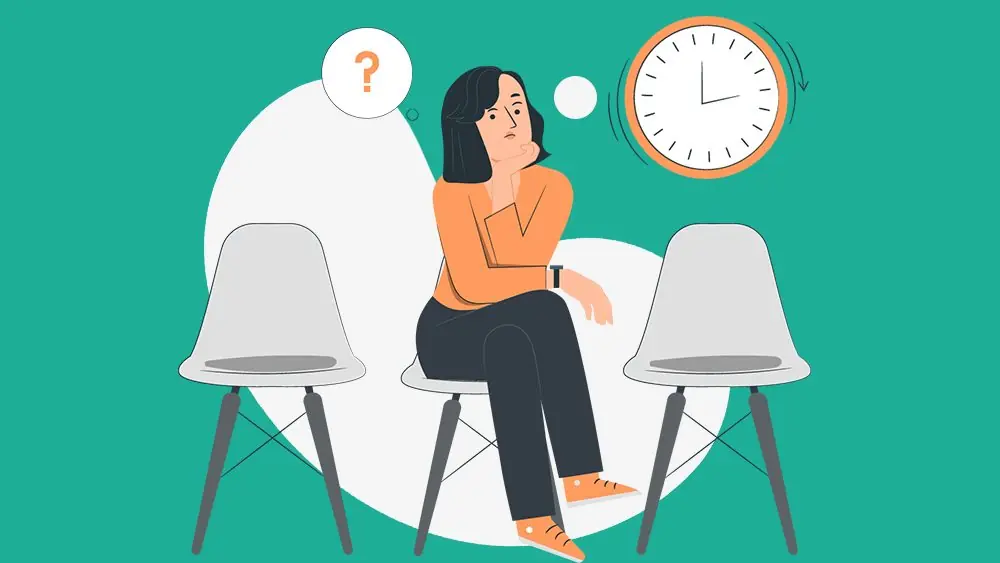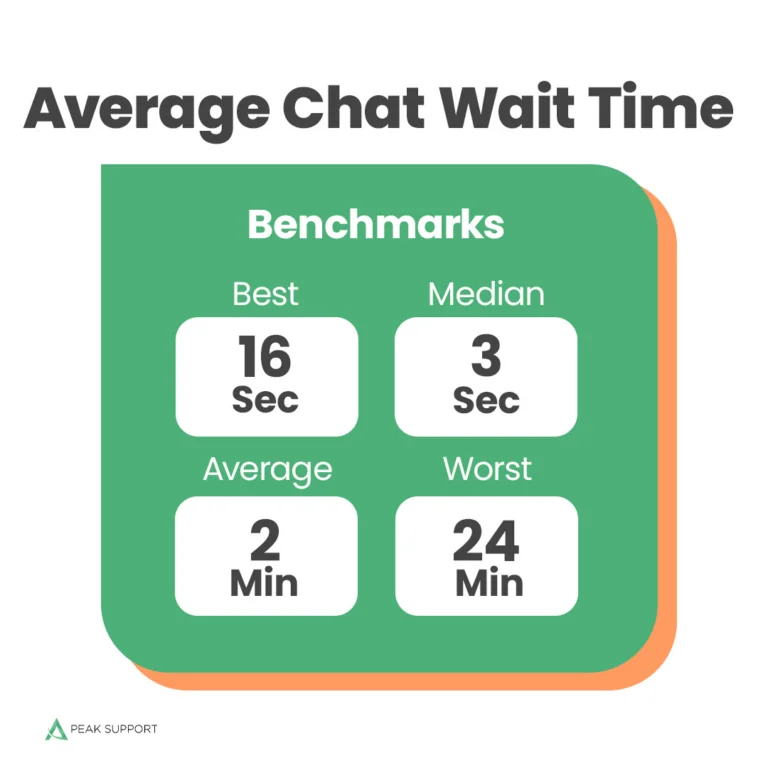2024 Key Performance Indicators for Customer Service: Average Chat Wait Time
- Peak Support

What is average chat wait time?
Average Wait Time is the average time it takes for a customer to receive an initial response from a support agent after they have initiated a chat session. This is sometimes also referred to as the response time. Average Wait Time is one of the most critical KPIs in chat support because customers have extremely high expectations.
Is average chat wait time an important KPI to track?
What company doesn’t offer live chat as a customer service channel option these days? Hiver asked customers their preferred channel for reaching out to customer service and 63% of the respondents chose live chat. After doing much research and data gathering for our 2024 Key Performance Indicators for Customer Service ebook, we found that 35 seconds was the average chat wait time. But companies should really aim to lower it down to 15 seconds to ensure that customers are provided with the speedy replies they deserve. It’s simple really, faster chat replies mean happier customers.
If you haven’t secured a copy of our 2024 KPIs for Customer Service ebook, don’t worry. Download it now to learn more about all the other important KPIs that you should be tracking.
Benchmarks
After reviewing 300 data points from more than 150 different sources and combining them, we were able to come up with the benchmarks shown below for the best, average, median, and worst average chat wait times.

Improve your Average Chat Time by implementing these tips
Reduce chat volume.
67% of customers say they prefer to solve their problems themselves, versus contacting customer service. Make sure your knowledge base is up to date, accurate, searchable, and optimized for SEO and for AI.
Leverage artificial intelligence.
If you have a thorough knowledge base, using a conversational AI chatbot can transform your live chat support. Conversational AI chatbots make the information in your knowledge base accessible, responding to customers in real-time with the most relevant bits to resolve their issues.
Staff a dedicated chat team.
If your agents are handling multiple channels at once, it’ll make it harder for them to respond immediately to new chats that come in. Consider dedicating certain agents to chat, which will improve efficiency. If chat volume spikes, you can always bring in additional agents from another queue.
Schedule agents strategically.
Customers expect near-instant responses on chat. You need someone available 100% of the time chat is turned on, which can be challenging if you’re a small team with only one chat agent. That means offering chat only when it makes sense for you and for your customers.
Find a BPO partner to achieve faster chat responses
The holidays are usually the busiest time for most businesses. And it’s important to remember to not get too complacent just because the bustling holiday season isn’t around the corner just yet. It’s always best to prepare ahead of time to handle the surge in customer inquiries, interactions, and support requests. After all, you don’t really want to disappoint customers by letting them wait for hours and hours (or maybe even an entire day) just to receive a shot reply or a question from your chat agent, right? Reach out to our sales team today to learn more about how Peak Support can assemble a team of highly trained customer service representatives who will treat your customers with empathy and respond to their chats promptly.
If you’d like some valuable suggestions on how you and your customer service team can achieve better chat wait times, we suggest reading our Guide to Reducing Hold and Chat Wait Times.
